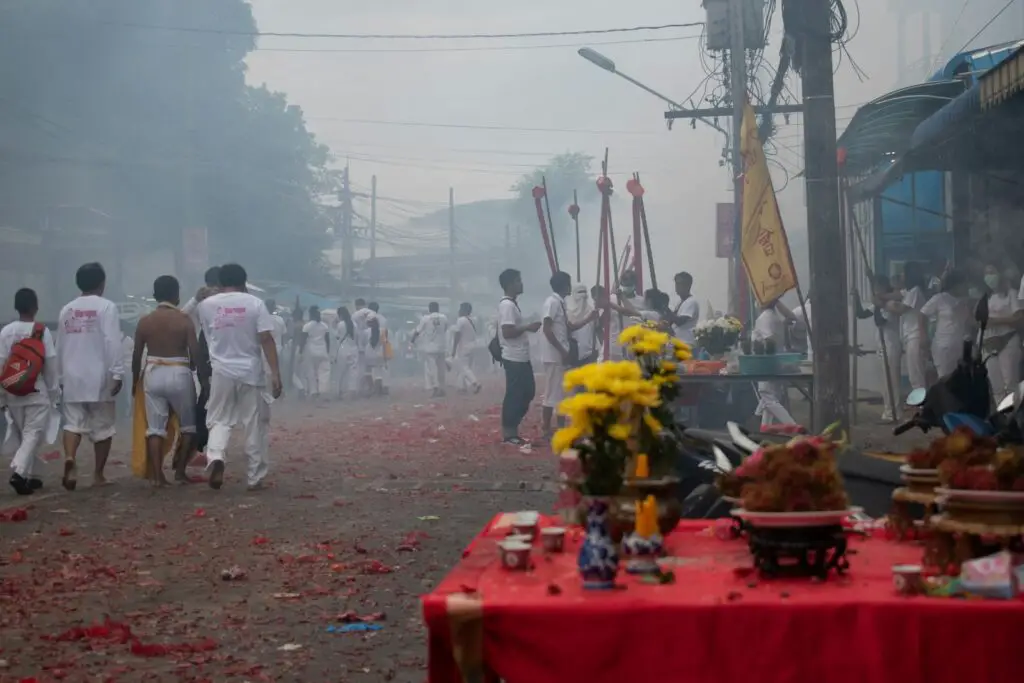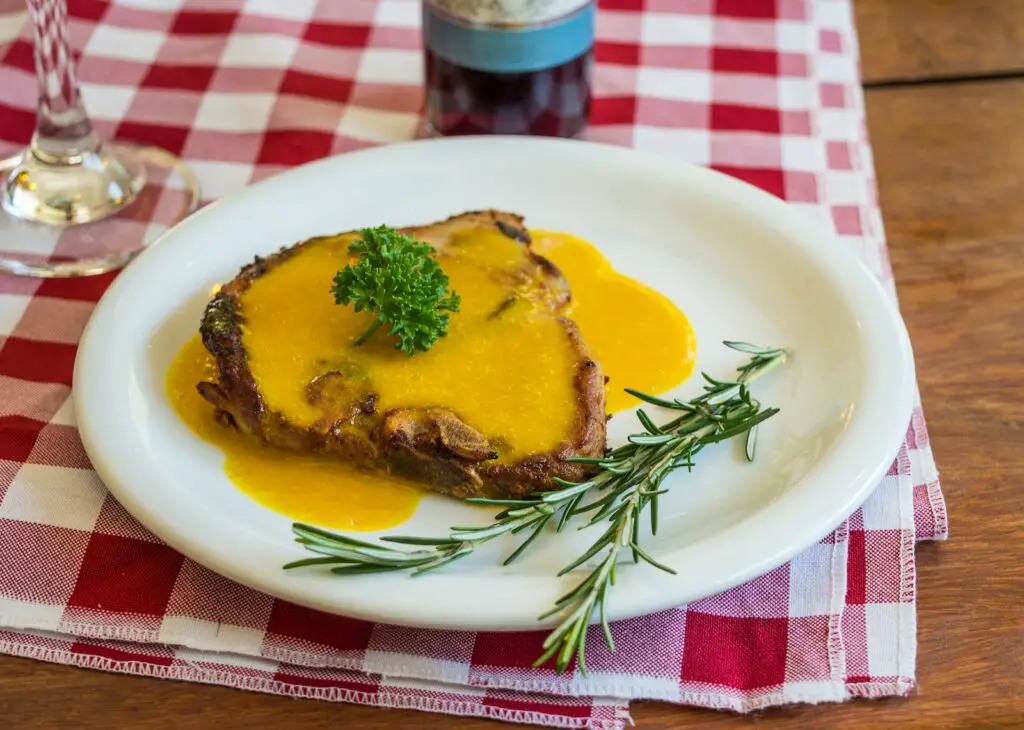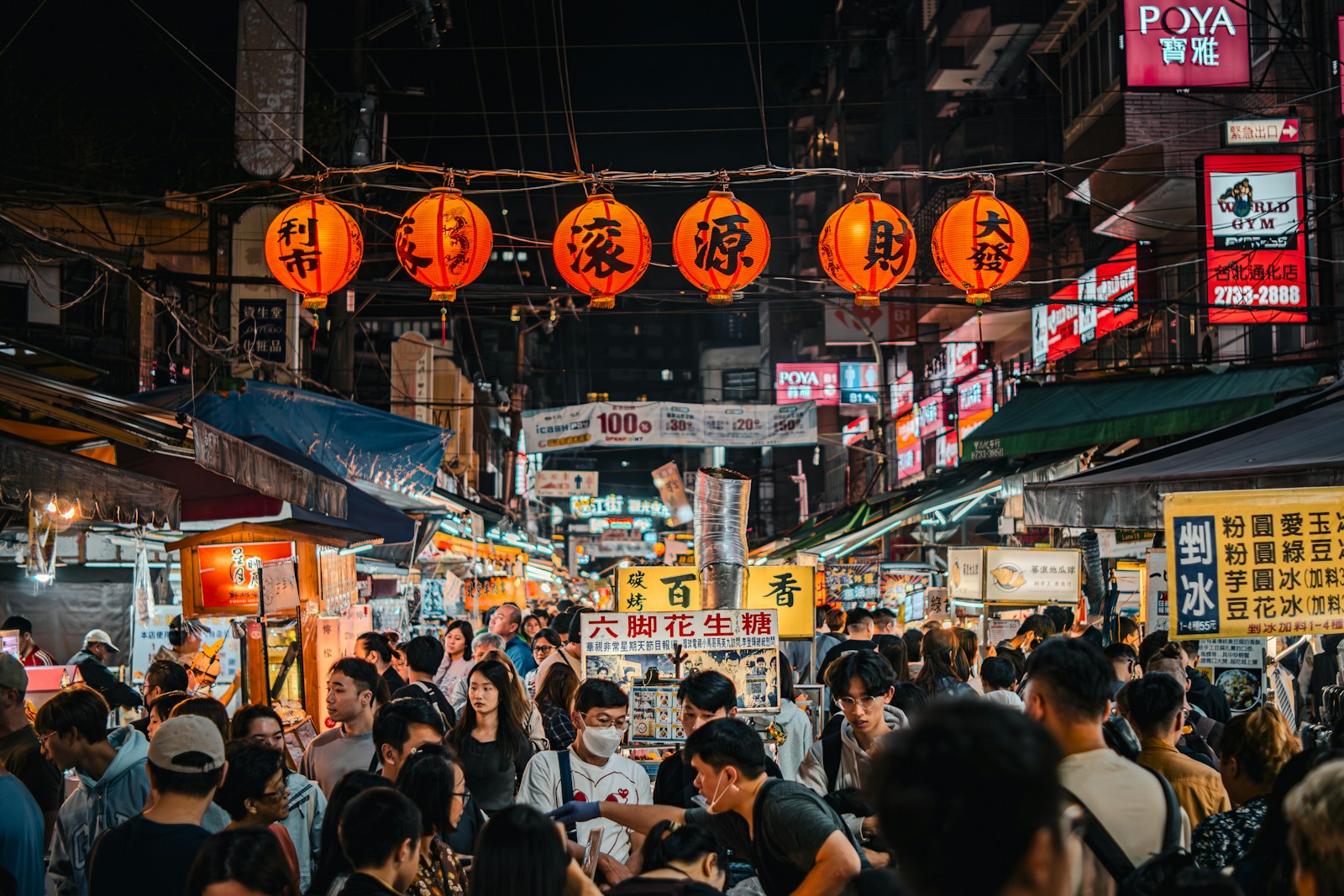Introduction: The Global Appeal of Food Festivals
Across continents and cultures, food festivals have emerged as prominent celebrations of culinary heritage and innovation. Their global appeal lies in the unique blend of tradition, creativity, and communal experience. These festivals often serve as a canvas showcasing regional produce, traditional recipes, and modern culinary techniques.
Historical Significance
Food festivals trace their roots to ancient harvest celebrations. Communities would gather to give thanks for bountiful crops, sharing food that symbolized prosperity. Over time, these gatherings evolved, becoming more elaborate, incorporating music, dance, and other cultural expressions.
Cultural Diversity
Food festivals reflect the cultural diversity of their regions. Each event offers a plethora of dishes that are deeply rooted in local traditions. From Asia’s vibrant street food festivals to Europe’s sophisticated wine and cheese events, these gatherings celebrate the culinary uniqueness of their origins.
- Asia: Home to colorful and diverse street food festivals, embodying a fusion of tradition and modernity.
- Europe: Known for its elegant wine, cheese, and chocolate festivals, where artisanal craftsmanship is celebrated.
- Americas: Hosts a range of festivals from BBQ cook-offs to seafood extravaganzas, focusing on regional specialties.
Culinary Innovation
Modern food festivals also serve as a platform for culinary innovation. Renowned chefs and emerging talents showcase experimental dishes, integrating global ingredients and techniques. These festivals often feature cooking demonstrations, workshops, and competitions, providing a dynamic environment for gastronomic exploration.
Economic Impact
The economic impact of food festivals is significant. They attract tourists, boosting local economies through increased spending on accommodation, food, and other services. Vendors and local businesses also benefit from increased visibility and sales.
Social Interaction
Food festivals foster social interaction and community bonding. They provide a space where people from different backgrounds can come together, share their love for food, and engage in cultural exchange. Through communal dining experiences, participants build connections and create shared memories.
Noteworthy Food Festivals
Several food festivals have gained international fame for their scale and distinctiveness:
- La Tomatina, Spain: Renowned for its tomato-throwing spectacle.
- Oktoberfest, Germany: Famous for its beer and traditional Bavarian fare.
- New Orleans Jazz & Heritage Festival, USA: Celebrates local cuisine alongside music.
- Pizzafest, Italy: An ode to the Neapolitan pizza, featuring competitions and tastings.
Food festivals continue to grow in popularity, drawing enthusiasts from around the globe seeking to immerse themselves in local flavors and traditions.
Asia’s Culinary Extravaganzas: From Bangkok to Tokyo
Asia’s food festivals are an embodiment of the continent’s rich and diverse culinary heritage. Traversing from Bangkok to Tokyo, these events promise an exploration of flavors that captivate the taste buds and evoke a deep appreciation for local cultures.
Bangkok: Thai Street Food Festival
Bangkok’s Thai Street Food Festival is a haven for food enthusiasts. Held annually, this festival glorifies Thailand’s vibrant street food scene.
- Location: Khao San Road
- Specialties:
- Pad Thai
- Som Tum (Papaya Salad)
- Mango Sticky Rice
Visitors can indulge in live cooking demonstrations and traditional dance performances, making the experience both culinary and cultural.
Singapore: World Gourmet Summit
Singapore’s World Gourmet Summit stands as a beacon for fine dining aficionados. This month-long event unites renowned international chefs and adds a sophisticated touch to the multicultural dining landscape.
- Location: Various venues across the city
- Highlights:
- Masterclasses by Michelin-starred chefs
- Exclusive degustation dinners
- Wine and spirit tastings

This summit celebrates innovation in the culinary arts, with each event meticulously curated to provide an unforgettable dining experience.
Hong Kong: Wine & Dine Festival
Hong Kong’s Wine & Dine Festival epitomizes the city’s cosmopolitan vibe, offering a perfect blend of gourmet cuisine and premium wines.
- Location: Central Harbourfront Event Space
- Features:
- Pop-up booths from top restaurants
- Wine-tasting zones
- Live culinary workshops
This event is a paradise for those who seek to pair exquisite dishes with the finest wines, all while enjoying spectacular views of the Victoria Harbour.
Tokyo: Ramen Expo
The Ramen Expo in Tokyo celebrates Japan’s quintessential comfort food, drawing ramen lovers from around the globe.
- Location: Tokyo Dome
- Key Attractions:
- Regional ramen stalls (Hokkaido miso, Kyushu tonkotsu)
- Cooking contests
- Workshops on ramen-making techniques
Participants have the opportunity to savor an array of ramen varieties, each bowl promising to deliver a unique taste of Japan’s culinary ingenuity.
Seoul: Kimchi Making & Sharing Festival
The Kimchi Making & Sharing Festival in Seoul pays homage to the Korean staple, reflecting the spirit of community and tradition.
- Location: Seoul Plaza
- Main Elements:
- Kimchi fermentation workshops
- Cultural performances
- Tastings of diverse kimchi types
This festival invites participants to immerse themselves in the art of kimchi-making while fostering a deeper understanding of Korean culture.
Europe’s Gourmet Gatherings: Paris to San Sebastián
Europe offers a remarkable register of gastronomic festivals that cater to diverse palates and culinary interests. These events provide an unparalleled opportunity to delve into the continent’s rich culinary tapestry.
Paris, France
Paris stands out as a beacon for gourmands worldwide. The city hosts events such as:
- Salon du Chocolat: A paradise for chocolate lovers, featuring over 500 participants from 60 countries presenting an array of confections.
- Taste of Paris: This renowned festival invites over 30 top chefs to the Grand Palais, offering signature dishes, cooking demonstrations, and workshops.
Truffle Festivals in Italy
Italy’s countryside is synonymous with truffle hunting, celebrated through:
- Alba International White Truffle Fair: In Piedmont, this fair runs from October to November, showcasing prized white truffles, wine tastings, and gourmet markets.
- San Miniato Truffle Festival: Held in Tuscany, this festival in November embodies the region’s profound truffle culture with a rustic, intimate experience.
San Sebastián, Spain
San Sebastián’s culinary scene is legendary, with emphasis on pintxos and high-end dining. Notable events include:
- San Sebastián Gastronomika: This illustrious congress in October focuses on the Basque culinary tradition, featuring world-renowned chefs and cutting-edge gastronomy.
- Tamborrada: Held in January, this festival includes a grand procession and sumptuous feasts celebrating Basque heritage.
Lyon, France
Lyon, often considered France’s culinary capital, hosts:
- Lyon Street Food Festival: This event attracts food trucks and chefs, offering a myriad of cuisines and culinary styles in a vibrant atmosphere.
- Fête des Lumières: While primarily a lighting festival in December, it also features an impressive array of festive foods and seasonal specialties.
Galway, Ireland

Galway has emerged as a key player on the foodie festival map:
- Galway International Oyster and Seafood Festival: Running since 1954, it is Europe’s longest-running oyster festival, with oyster-shucking contests, seafood trails, and culinary demonstrations.
- Galway Food Festival: This Easter event celebrates local produce and sustainable cooking, with markets, workshops, and tastings.
These gourmet gatherings offer an in-depth look into Europe’s profound culinary diversity.
North America’s Flavorful Affairs: New York to Mexico City
North America presents a mosaic of culinary experiences that range from the cosmopolitan streets of New York to the vibrant flavors of Mexico City.
New York City: A Melting Pot of Tastes
New York City stands as a culinary epicenter, offering an array of food festivals that reflect its diversity. The:
- New York City Wine & Food Festival showcases renowned chefs and mixes cuisines from around the world.
- Smorgasburg is a sprawling open-air market that takes place every weekend, where visitors can sample innovative street foods from local vendors.
- Feast of San Gennaro in Little Italy includes Italian-American delicacies celebrated with parades and live music, embodying the rich immigrant heritage of the city.
Chicago: Deep-Dish Delights and Beyond
Chicago, a city known for its culinary prowess, hosts:
- Taste of Chicago in Grant Park, the world’s largest food festival, offering a taste of the city’s varied dining scene.
- Chicago Gourmet provides a more refined experience, featuring celebrity chefs and wine experts.
- Ribfest Chicago appeals to barbecue aficionados, showcasing the city’s love for hearty, flavorful meat dishes.
New Orleans: A Symphony of Flavors
New Orleans is synonymous with rich, spicy Creole and Cajun cuisines. Key festivals include:
- New Orleans Wine & Food Experience where local and international chefs present their best creations.
- French Quarter Festival highlights local food, music, and culture, offering an intimate taste of New Orleans heritage.
- Tales of the Cocktail hones in on the city’s cocktail culture, known for its incredibly flavorful drinks.
Mexico City: A Culinary Fiesta
Mexico City, renowned for its vibrant and authentic flavors, features:
- Millesime Mexico where visitors can engage in a gourmet journey crafted by top-tier chefs.
- Festival de la Gastronomía y el Vino Mexicano focused on promoting regional cuisines and native ingredients.
- Mercado de San Juan Food Festival where traditional and exotic foods are merged, reflecting the city’s diverse gastronomy.
Each city has its own unique way of celebrating their culinary traditions, making them must-visit destinations for food enthusiasts.
South America’s Festive Feasts: Lima to Buenos Aires
South America bursts with vibrant food festivals, from Lima’s culinary celebrations to Buenos Aires’ gastronomic delights. Embracing diverse flavors and traditions, these cities showcase common regional ingredients with a unique flair.
Lima, Peru
Lima stands at the heart of South America’s culinary renaissance. Known for its seafood, the city hosts annual food festivals that attract locals and international visitors alike.
- Mistura: As one of the largest food festivals in Latin America, Mistura highlights a diverse range of Peruvian dishes, including ceviche, anticuchos, and lomo saltado. Chefs from different regions present their specialties, offering an authentic taste of Peru.
- Gastronomic Fair: Local markets and food fairs frequently feature prominently in Lima’s neighborhoods. Visitors can sample street food like picarones and causa, reflecting the local cuisine’s richness.
Santiago, Chile
Santiago’s vibrant food scene centers on traditional Chilean dishes that mix indigenous flavors with Spanish influences. The city offers an array of food festivals showcasing local ingredients.
- Feria Gastronómica del Mar: Celebrating Chile’s rich seafood heritage, this festival offers treats like king crab, sea urchin, and locos, prepared by top chefs.
- Mercado Mastica Fest: This urban food fair brings together gourmet street food vendors, offering delights such as empanadas, pastel de choclo, and mote con huesillo.
Buenos Aires, Argentina
Buenos Aires marries European culinary techniques with Argentine passion, resulting in unique flavors and festivals.
- Feria Masticar: Held annually, Feria Masticar is the largest food fair in Argentina. It presents traditional dishes such as asado, empanadas, and chimichurri. Renowned chefs hold cooking classes, while food stalls provide hand-made delicacies.
- Vino al Río: This wine-themed festival pairs Argentina’s famous Malbecs with local cuisines, including charcuterie and artisanal cheeses. It highlights the country’s rich culinary heritage, focusing on wine enthusiasts.
These cities’ food festivals provide a journey through the heart of South America’s cultures and cuisines, fostering a deeper appreciation for diverse culinary traditions.
African Delight: Cape Town to Marrakech

From Cape Town to Marrakech, culinary enthusiasts can explore an array of vibrant food festivals that celebrate Africa’s rich and diverse gastronomic heritage. Cape Town, with its fusion of indigenous and international flavors, sets the stage for an unforgettable food journey starting with the Cape Town Street Food Festival. This annual event serves an eclectic mix of local favorites such as bobotie and bunny chow, alongside gourmet street food from top chefs.
Key Attractions in Cape Town:
- Cape Town Street Food Festival
- Date: Every September
- Highlights: Traditional dishes, gourmet street food, food trucks
- Delheim Start of Harvest Festival
- Date: Late January
- Highlights: Grape picking, traditional Afrikaner cuisine
- Good Food & Wine Show
- Date: May
- Highlights: Celebrity chef demonstrations, wine tastings, artisanal treats
The next stop on this culinary expedition is Marrakech, a city known for its rich flavors and aromatic spices. The Marrakech Popular Arts Festival is a sensory delight, featuring a diverse range of culinary experiences. Visitors can savor tagine, couscous, and pastilla while enjoying live music and dance performances.
Key Attractions in Marrakech:
- Marrakech Popular Arts Festival
- Date: July
- Highlights: Traditional Moroccan dishes, street performances, parades
- Tan-Tan Moussem Festival
- Date: May
- Highlights: Nomadic cuisine, camel races, local crafts
- Essaouira Gnaoua Festival
- Date: June
- Highlights: Fusion of Moroccan and African dishes, Gnaoua music
Travelers can traverse the continent through a rich tapestry of food and culture. Each stop offers unique opportunities to engage with local traditions and culinary practices. Several other notable African food festivals include Durban’s Global Table in South Africa, known for Zulu cuisine, and Lagos’s Eat.Drink.Lagos Festival in Nigeria, which showcases West African flavors.
Additional Notable African Food Festivals:
- Durban’s Global Table (South Africa)
- Date: September
- Highlights: Zulu cuisine, global culinary influences
- Zanzibar’s Stone Town Food Festival (Tanzania)
- Date: December
- Highlights: Seafood, Swahili dishes, cultural performances
- Eat.Drink.Lagos Festival (Nigeria)
- Date: December
- Highlights: West African flavors, street food
From the southern tip of Africa to the northern deserts, food festivals across the continent offer unparalleled experiences for culinary adventurers. Each festival is a celebration of African heritage, inviting attendees to immerse themselves in a world of taste and tradition.
The Hidden Gems of Oceania: Sydney to Auckland
From bustling Sydney to the vibrant city of Auckland, Oceania offers a plethora of food festivals that remain largely undiscovered by mainstream tourism. These festivals are a haven for food enthusiasts seeking authentic and unique culinary experiences.
1. Sydney’s Night Noodle Markets
Held annually, the Sydney Night Noodle Markets transform Hyde Park into a bustling Asian street food paradise. Visitors can enjoy:
- Authentic Asian Cuisine: From Thai and Chinese to Malaysian and Japanese stalls.
- Live Entertainment: Featuring traditional performances and contemporary acts.
- Innovative Food Creations: From fusion dishes to Instagram-worthy dessert creations.
2. Taste of Manly
This beachside food and wine festival in Manly is an unmissable event. Highlights include:
- Local Produce: Showcasing the best of New South Wales’ vineyards and breweries.
- Scenic Views: Located along the iconic Manly Beach.
- Interactive Workshops: Including cooking demonstrations from renowned local chefs.
3. Taste of Tasmania
Held in Hobart, this festival celebrates Tasmanian produce and ingredients. Key attractions are:
- Local and Seasonal Produce: Mouth-watering seafood, artisanal cheese, and farm-fresh vegetables.
- Cultural Performances: Reflecting the island’s rich history and tradition.
- Cooking Classes: Led by top chefs focusing on sustainable cooking practices.
4. Auckland’s Taste of Pasifika
A cultural feast for the senses, the Taste of Pasifika festival offers:
- Pacific Island Cuisine: From Samoan umu (earth-oven cooked food) to Tongan lu pulu (corned beef wrapped in taro leaves).
- Cultural Exhibits: Showcasing traditional arts and crafts.
- Traditional Music and Dance: Featuring performances from local and international groups.
5. Auckland Food Show
A hallmark of culinary excellence, the Auckland Food Show features:
- Exhibitor Stalls: Over 300 stalls presenting gourmet foods, kitchenware, and the latest cooking gadgets.
- Celebrity Chef Sessions: Live cooking demonstrations by well-known chefs.
- Tasting Zones: Offering samples ranging from fine wines to artisanal bread.
These lesser-known food festivals in Oceania offer unparalleled opportunities to engage with diverse cuisines and cultures, making them essential visits for any food lover. From the enchanting night markets in Sydney to the richly cultural experiences in Auckland, these events promise unique flavors and unforgettable experiences.
Middle Eastern Marvels: Dubai to Beirut
For culinary adventurers, the Middle East offers a unique blend of tradition and modernity. Spanning across Dubai and Beirut, the region promises an unforgettable gastronomic journey.
Dubai
Dubai, known for its luxurious lifestyle, hosts several food festivals that celebrate both local and international cuisines.
- Dubai Food Festival: Held annually, this event showcases gourmet dining experiences, street food, and a diverse array of international chefs presenting their specialties. Key highlights include:
- Taste of Dubai: An exclusive segment featuring pop-up restaurants by some of Dubai’s finest eateries.
- Beach Canteen: An outdoor venue where visitors can enjoy food stalls by the beach.
- Dine with the Stars: A unique opportunity to dine with celebrity chefs and enjoy curated menus.
- Gulfood: One of the largest food and beverage trade shows in the world. It attracts food industry professionals and showcases the latest innovations and products from around the globe.
Beirut
Beirut, often dubbed the “Paris of the Middle East,” offers a rich culinary heritage combined with modern influences.
- Beirut Cooking Festival: This annual event celebrates Lebanese cuisine and international dishes. It features:
- Live Cooking Shows: Renowned chefs demonstrate their skills and share recipes.
- Food and Drink Tastings: A variety of booths offering samples of regional delicacies, wines, and spirits.
- Workshops: Interactive sessions where attendees can learn about cooking techniques, ingredients, and food trends.
- Taste of Lebanon: A festival dedicated to promoting Lebanon’s culinary arts. Key elements include:
- Traditional Lebanese Dishes: From mezze to kebabs, attendees can savor authentic flavors.
- Music and Dance: Complementing the food experience with traditional Lebanese entertainment.
The culinary events in these cities represent their vibrant food cultures, making them must-visit destinations for any food lover.
Seasonal Sensations: Harvest and Seafood Festivals
Food enthusiasts find unique regional flavors and culinary experiences at harvest and seafood festivals held across the globe. These festivals celebrate local abundances, often combining food with cultural activities. Here, we explore some notable harvest and seafood festivals worth visiting.
Harvest Festivals
- La Tomatina (Buñol, Spain): Known as the world’s largest food fight, La Tomatina celebrates the tomato harvest. Held on the last Wednesday of August, participants throw overripe tomatoes at each other, creating a unique and joyful atmosphere.
- Niagara Wine Festival (Niagara, Canada): Spanning several weekends in September, this festival showcases the region’s finest wines and fresh produce. Activities include wine tastings, vineyard tours, and culinary pairings enhanced by local chefs’ expertise.
- Gilroy Garlic Festival (Gilroy, USA): Celebrating the “Garlic Capital of the World,” this California festival takes place annually in July. Visitors indulge in garlic-infused dishes, cooking competitions, and live entertainment, creating a garlic-lover’s paradise.

Seafood Festivals
- Maine Lobster Festival (Rockland, USA): Held each August, this five-day festival is a haven for lobster enthusiasts. Attendees relish lobster dishes, participate in a lobster crate race, and enjoy a vibrant parade.
- Hokkaido Seafood Festival (Sapporo, Japan): Occurring in early October, this festival emphasizes Hokkaido’s rich marine bounty. Visitors savor delicacies like fresh crab, salmon roe, and uni (sea urchin), accompanied by traditional music and dance.
- Galway Oyster Festival (Galway, Ireland): Celebrated every September, it is one of Europe’s longest-running festivals dedicated to oysters. Highlights include oyster-shucking competitions, culinary demonstrations, and traditional Irish music.
Pro Tip: When attending these festivals, advance planning is recommended. Accommodations near festival venues often book up quickly, and some events may require ticket purchases beforehand.
Combining cultural richness with gastronomic delights, these harvest and seafood festivals offer unparalleled experiences for food travelers. The diverse locations and unique celebrations make them essential stops on any culinary journey.
Wild Foods and Unique Cultural Experiences
Venturing into the world’s food festivals offers more than just extraordinary cuisine—it is a gateway to rich, time-honored traditions and a deep dive into diverse cultural landscapes. These festivals celebrate indigenous foods, age-old culinary practices, and eclectic flavors.
Traditional Indigenous Ingredients
Many food festivals focus on traditional ingredients that are intrinsic to their local cultures. Examples include:
- Muktuk in Nuuk, Greenland: This traditional Inuit dish, made from whale skin and blubber, provides a unique taste of Arctic life.
- Kangaroo and Emu in Alice Springs, Australia: The “Bushfoods” festival showcases indigenous Australian ingredients like kangaroo, emu, and native herbs.
- Chapulines in Oaxaca, Mexico: These seasoned grasshoppers are a popular local delicacy, offering a crunchy bite and a taste of pre-Hispanic cuisine.
Cultural Cooking Techniques
The manner of preparation can be as fascinating as the ingredients themselves. Festivals often highlight techniques passed down through generations, such as:
- Imu in Hawaii: The Hawaiian Luau features an “imu,” an underground oven used to cook traditional dishes like kalua pig.
- Tandoor in India: Traditional Indian festivals celebrate the use of the tandoor, a clay oven, for cooking naan bread and tandoori meats.
- Smoking huts in Scandinavia: Nordic food festivals often demonstrate ancient smoking methods used for preserving fish and meats.
Unique Celebrations
Some festivals are uniquely intertwined with cultural rituals and storytelling, enriching the overall experience. Examples include:
- Naga Morisset in Nagaland, India: This festival celebrates the spicy Naga chili, incorporating traditional dance, music, and folklore.
- Nyepi Festival in Bali, Indonesia: Combining fasting and intense feasting, this festival emphasizes spiritual purification alongside rich culinary traditions.
- Chinchilla Melon Festival in Queensland, Australia: Known for its quirky events like melon skiing and melon bungee, it showcases creative ways to enjoy melons.
Culinary Tours and Workshops
Attending these food festivals often means participating in culinary tours and workshops led by local chefs and artisans, allowing attendees to:
- Learn how to forage for wild mushrooms in Washington State, USA.
- Undergo sushi-making workshops in Japan, combining knife skills with fish selection.
- Experience making traditional sourdough bread in San Francisco, USA.
The immersion into wild foods and unique cultural practices at these festivals provides a rare, enriching experience well beyond ordinary culinary tourism.
Tips for Planning Your Culinary Adventure
Embarking on a culinary journey requires thoughtful planning to maximize enjoyment and satisfaction. To assist in this endeavor, consider the following tips:
- Research Your Destinations Research extensively about the food festivals you plan to visit. Take note of the festival dates, locations, and the key events scheduled. Check for any entry fees or ticket requirements and purchase them in advance if possible.
- Create an Itinerary Develop a detailed itinerary that includes the festival dates, travel times, and accommodation details. Incorporate buffer times to accommodate unexpected delays or spontaneous discoveries. Ensure your schedule allows enough time to fully experience each event.
- Understand the Local Cuisine Familiarize yourself with the local cuisine of the festival location. This includes understanding the signature dishes, local ingredients, and food preparations. Read culinary blogs, watch cooking shows, and refer to travel guides for an immersive insight.
- Pack Essentials Prepare a checklist of essential items to carry. This may include:
- Comfortable Footwear: Food festivals often require extensive walking.
- Weather-Appropriate Clothing: Check the weather forecast and dress accordingly.
- Reusable Tote or Bag: Handy for carrying purchased items or festival souvenirs.
- Water Bottle: Staying hydrated is crucial during long festival hours.
- Engage with Locals Engage with local vendors, chefs, and other festival attendees to gain a deeper understanding of the culinary culture. Ask for recommendations and be open to trying new dishes that are not on your usual list.
- Manage Dietary Restrictions If there are any dietary restrictions or allergies, plan accordingly. Research if the festival offers options that cater to your dietary needs. Contact organizers in advance or consult festival guides for detailed information.
- Budget Wisely Set a budget for your culinary adventure, accounting for travel, accommodation, meals, and incidental expenses. Be mindful of additional costs such as premium dining experiences or tasting sessions. Utilize cash and cards based on local preferences.
- Keep Health in Mind Prioritize health and hygiene during your food festival visits. Carry hand sanitizers, wipes, and any prescribed medication. Be cautious about consuming street food and drink only from safe, trusted sources.
By adhering to these tips, one can ensure a well-organized and enriching food festival experience, creating delightful gastronomic memories.
Conclusion: Savoring the World One Bite at a Time
Food festivals offer an unparalleled glimpse into the culinary and cultural richness of a destination. They are not merely events; they are full-fledged gastronomic journeys that bring together the essence of traditional cuisines, innovative culinary techniques, and deep-rooted community spirit. Food enthusiasts, travel aficionados, and cultural connoisseurs often find themselves reveling in these indulgent celebrations.
Highlights of Top Food Festivals
- The Taste of Chicago
- Noted as the “World’s Largest Food Festival”
- Features gourmet dishes from various ethnic neighborhoods
- Live music, cooking demos, and family activities
- La Tomatina in Buñol, Spain
- A distinctive food fight event using only ripe tomatoes
- Accompanied by parties, music, dance, and fireworks
- Unique interaction of culinary culture and carnival atmosphere
- Pizzafest in Naples, Italy
- Celebration of Naples’ status as the birthplace of pizza
- Pits top pizzaiolos against each other in pizza-making contests
- Showcases array of pizza styles from traditional to contemporary
Immersive Experiences
- Cultural Connections
- Engage with local traditions and customs.
- Learn from local chefs and culinary experts.
- Meet artisans and understand the intricacy of food preparation.
- Culinary Workshops
- Participate in hands-on cooking classes.
- Discover indigenous ingredients and their uses.
- Network with fellow food lovers and experts.
Benefits of Attending Food Festivals
- Educational Value: Gain knowledge about diverse culinary techniques.
- Cultural Immersion: Experience local traditions and festive customs.
- Networking Opportunities: Meet chefs, food critics, and fellow enthusiasts.
Noteworthy Mentions
“Food festivals are avenues for discovering not just new tastes, but new perspectives on cultural history and human creativity.”
— Culinary Institute Insight
- Environmental Advocacy: Many festivals promote sustainability and farm-to-table philosophies.
- Economic Impact: Boost to local economies through tourism and hospitality sectors.
Final Thoughts
In essence, food festivals are dynamic reflections of global culinary excellence and cultural pride. By attending these fetes, one embarks on an enriching journey that transcends mere consumption of food, fostering a deeper appreciation for the myriad ways cuisine shapes and reflects societies around the world.


Leave a Reply